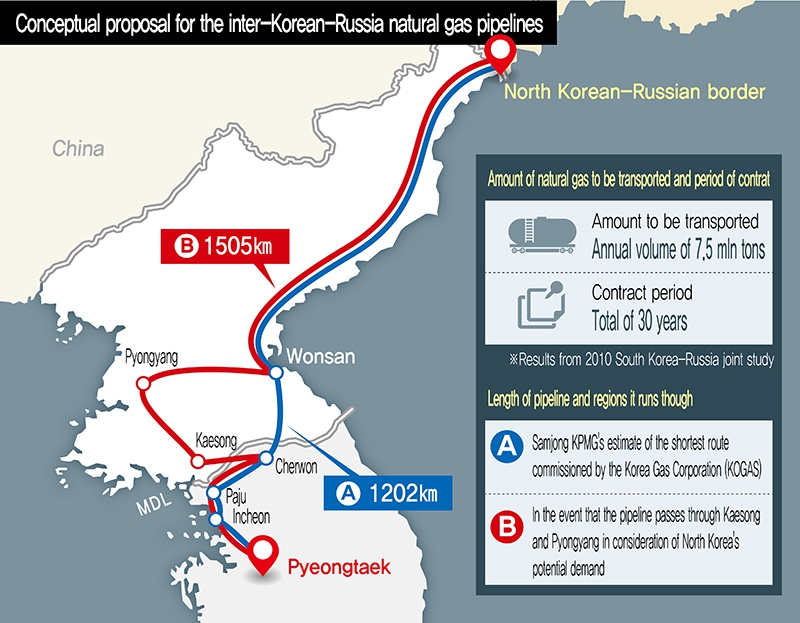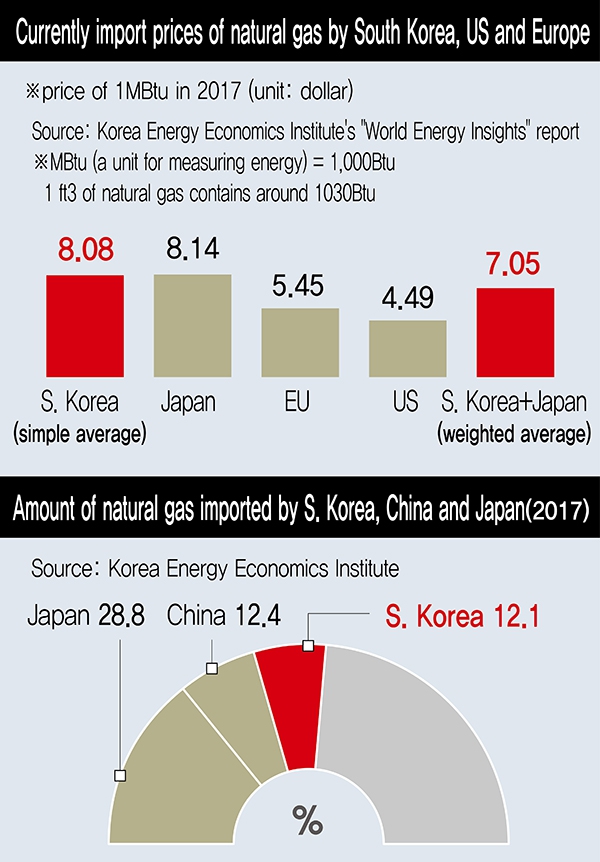 |
|
Conceptual proposal for the inter-Korean-Russia natural gas pipelines
|
Trilateral product would extract gas from Siberia and supply it to S. Korea via N. Korean pipes
Technical preparations are underway for a joint study by South Korea and Russia aimed at reviewing the economic feasibility of a plan to lay a natural gas pipeline that would run through North Korea, connecting Russia and South Korea. If this huge project is actually carried out, it would create an “energy artery” linking South and North Korea. Since the trilateral cooperation on natural gas resources potentially represents the triple boon of economic benefits, peace on the Korean Peninsula and co-prosperity of South and North Korea, eyes are fixed on when South Korea and Russia will initiate their joint study. On Oct. 24, the Korea Gas Corporation (KOGAS) announced that it had undertaken the technical preparations that are one of the preliminary phases for a joint study between South Korea and Russia on piped natural gas (PNG) for a trilateral natural gas project in which natural gas extracted from gas wells in Siberia and the Russian Far East would be supplied through overland pipes in North Korea to South Korea. “The PNG joint research is unconnected to sanctions on North Korea, and we are carrying out technical preparations for creating future conditions without violating the sanctions,” KOGAS said. During a summit between South Korean President Moon Jae-in and the leader of Russia in June, the two leaders agreed to move forward with a joint gas study aimed at trilateral cooperation with North Korea. They also agreed that KOGAS and Russian state-owned gas company Gazprom would conduct joint research into the economic feasibility and technical aspects of laying a pipeline. Recently, the two gas companies have held a number of working-level deliberations aimed at launching the joint study. The plan to run a pipeline through North Korea to pipe Siberian natural gas into South Korea has been periodically discussed both in the private sector and in the government since the 1990s, but it was effectively scuttled by a number of volatile factors, such as North Korea’s nuclear program. A report reviewing a 2010 joint study by South Korea and Russia stated that an annual 7.5 million tons of natural gas produced by Siberian gas wells would be supplied to South Korea through an overland pipeline. In regard to the length of the pipeline, Samjong KPMG estimated in 2015 at the request of KOGAS that the shortest route (running from the North Korea-Russian border through Wonsan, Cheolwon, Paju and Incheon to Pyeongtaek) would be 1,202km long. If the pipeline ran through Pyongyang and Kaesong, in consideration of North Korea’s potential demand for natural gas, the length would extend to 1,505km. Though North Korea uses hardly any natural gas at present, it’s highly likely to add natural gas to its energy supply moving forward.
 |
|
Currently import prices of natural gas by South Korea, US and Europe
|







